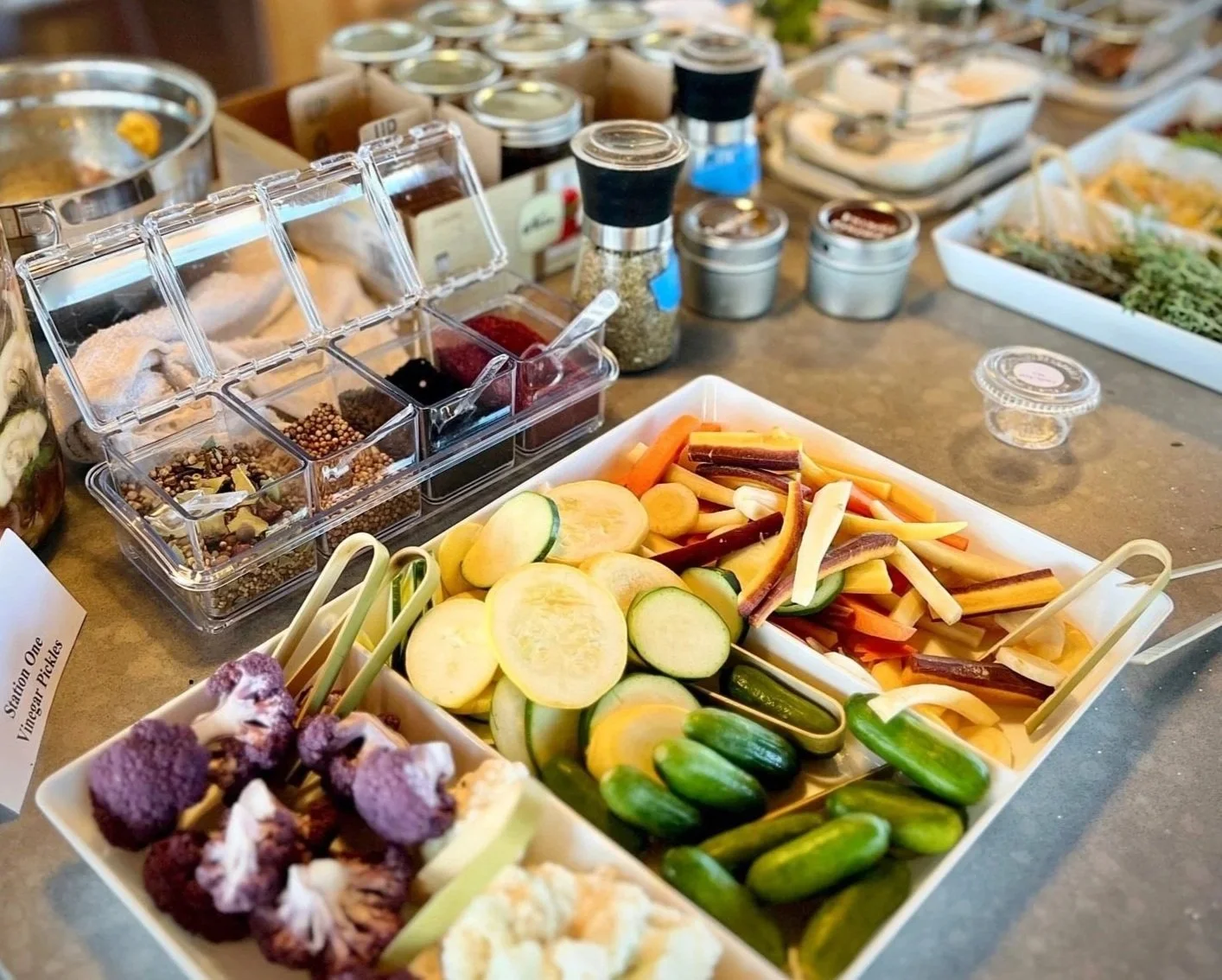
Transformative Pickles
Taste the flavors of change
Activating Change
The process of pickling is a potent metaphor for transformation. It takes a simple ingredient and, through the application of science and time, turns it into something vibrant, complex, and enduring. Our pickle workshop, Activating Change with Pickles, uses this tangible process to explore the Clear-Grow-Deliver model of change readiness and activation.
This framework helps groups and individuals define clear and actionable tasks. Participants learn to frame their next steps through three lenses:
Clear: How can we make space for what's next?
Grow: How can we enable the next step?
Deliver: How can we fulfill commitments we’ve made and consider them closed?
By using the hands-on activity of crafting flavorful quick pickles, groups practice sequencing tasks, prioritizing based on readiness and capacity, and keeping things simple. It is a dynamic and flavorful way to learn a practical model for managing change and moving projects forward with intention.
What Pickles Mean to Us: a tool for change
We use sour to enliven our food and to capture a moment in time.
Sourness is a familiar taste, derived from what we call culinary acids. These acids occur naturally in most fruits and vegetables, or are a result of a fermentation process. Our fascination with pickles is rooted in the science of sour. This fundamental taste, derived from what we call culinary acids, is a key component of global cuisines. These acids, whether occurring naturally in fruits and vegetables or created through a process of fermentation, are powerful tools for flavor and preservation. You may have squeezed a lemon over an umami-rich Caesar salad or used vinegar to keep summer-ripe vegetables fresh into the winter.
Acid Origins
The culinary acids we typically consume are derived from familiar sources.
See if you can guess where each acid comes from before opening the drop-down tab!
-
Citrus fruits, highest in lemon & lime
Other fruits, like pineapple and berries
Vegetables such as tomato and carrot
-
Found in most fruits, highest in apples
Predominant acid in stone fruits like apricot and plum
Present in berries and grapes
-
The acid most commonly associated with fermentation.
Responsible for the sour flavor in yogurt, cheese, sauerkraut, kimchi, sourdough, tofu, beer, and other fermented foods
-
Commonly found in grapes, tamarind, and unripe banana.
This acid is often found in foods high in tannins or similar astringent compounds
-
The flavor of vinegar in all forms.
Also found in fresh fruits like grapes, apples, oranges, and berries.
Make It Your Own: Recipes and Resources
Our quick Pickling Spice Mixes bring acids and spices together to dramatically transform fresh fruits and vegetables into sensory explorations that invoke other places and ideas, perfect for our workshops on activating change in dynamic times, and also for preserving and elevating garden favorites.
Deepen your understanding of fermentation and global culinary traditions of pickles with this tasting guide.
You’ll Need:
2-3 types of pickles (refer to the Pickle Styles chart for ideas)
1/4 cup yogurt or sour cheese such as labneh
2 slices lemon or lime
5-6 grapes or tamarind paste
1 tablespoon honey or agave syrup
1/4 teaspoon Kosher or Flake Salt such as Maldon
1-2 slices sourdough bread or rye crackers
8 ounces room temperature water
Arrange your sour foods on a platter or in small bowls. Have a sip of water and a cracker to cleanse your palate.
Taste each sour food using all of your senses- note appearance, aroma, and sound.
Bring the food to your nose and inhale deeply. Take a small bite and chew slowly, allowing it to coat your tongue before swallowing. What does it taste like? How does it feel on your tongue?
Cleanse your palate again with water and a bite of bread then repeat these steps with the other sour foods. What differences can you taste? What flavors do they share?
Try combining sour with salty and sweet. Drizzle a little honey on the yogurt or sprinkle salt on a lemon slice. How do these flavors accentuate one another? What foods do these combinations remind you of?





